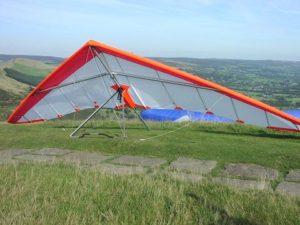 A hang glider can be a pain to ship because of its mere size. Most gliders can be taken apart but they tend to be bulky even in their disassembled form. There are parts of the aluminum alloy frame that remain long after dis-assembly. Being over sized, expect additional shipping fees when transporting your glider via a carrier.
A hang glider can be a pain to ship because of its mere size. Most gliders can be taken apart but they tend to be bulky even in their disassembled form. There are parts of the aluminum alloy frame that remain long after dis-assembly. Being over sized, expect additional shipping fees when transporting your glider via a carrier.
Because hang gliding is a dangerous activity, the glider must be handled with care to avoid any damage that could cause accidents while the equipment is being used. A tiny hole on a glider’s wing or a dent on the frame tubing could be fatal. Thus, it is important to protect the glider from such damages when the equipment is being transported. Here are some tips on how to properly pack and ship a hang glider to ensure that it arrives in its destination safely and in excellent condition.
A hang glider consists of a wing, a frame, cables and other parts that hold everything in place. These parts can be disassembled for easy handling and storage. Follow instructions on how to properly disassemble your hang glider. Once taken apart, neatly fold or roll the wings into its smallest size possible and wrap in bubble wrap. Also wrap the aluminum tubing that make up the frame in bubble wrap. All bolts, screws, cables and other items that complete the equipment should be collected and placed in a Ziploc bag. Also wrap the bag in bubble wrap.
Gather all the wrapped hang glider parts and bind together into a long bundle using packaging tape. Since the parts are all covered in bubble wrap, there is no danger of damaging the glider with the tape’s adhesive. Wrap the bundle with another couple of layers of bubble wrap and secure with more tape. Add more padding on both ends of the bundle as these parts are most likely to suffer most impact during handling and transport.
Place your bundled hang glider inside a cardboard concrete form, such as Sonotube, that has been cut to size. These heavy duty cardboard tubes are used as molds when pouring concrete into structural columns and pillars, and make a cheap, light-weight and sturdy container for your glider.
Make sure that the glider fits snugly into the tube. Add more packing materials as necessary to prevent the glider from shifting or moving inside the tube. Plug both ends of the tube with a plywood disc and secure in place with heavy-duty tape. Make sure that both ends are well-sealed and there is no way for either end discs to pop out.
Address and label the tube and take to a reputable shipping company. Extremely over sized packages might be rejected by commercial carriers. In such cases, you might want to use a freight service instead.
